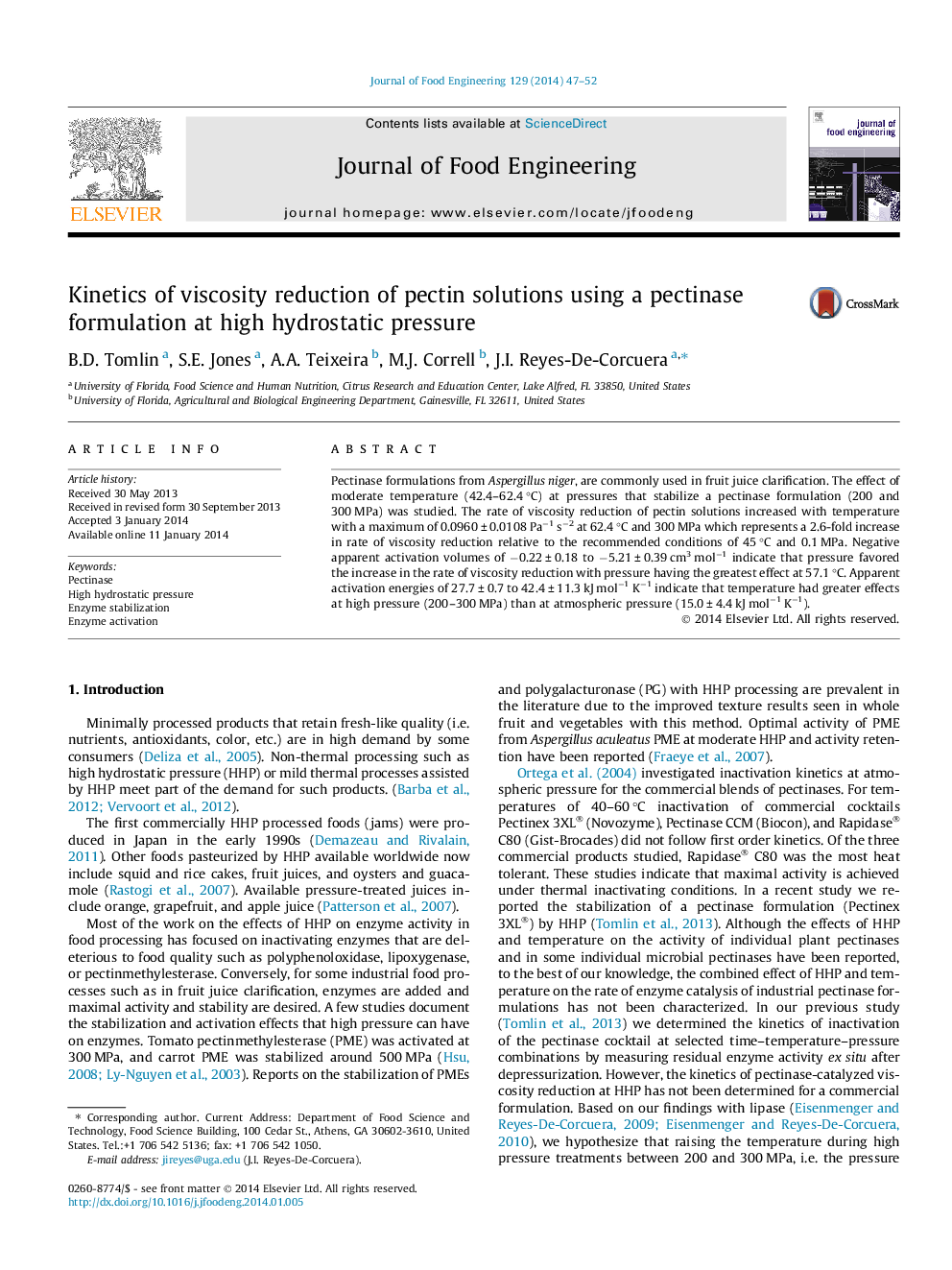| Article ID | Journal | Published Year | Pages | File Type |
|---|---|---|---|---|
| 223232 | Journal of Food Engineering | 2014 | 6 Pages |
•At 0.1–250 MPa and 42.4–62.4 °C the activity of a pectinase formulation increased with pressure.•At moderate high pressures, the rate of viscosity reduction increased with temperature up to 62.4 °C.•Optimal pectinase activity occurred at 300 MPa and 62.4°. Under these conditions, simultaneous clarification and microbial kill would occur.
Pectinase formulations from Aspergillus niger, are commonly used in fruit juice clarification. The effect of moderate temperature (42.4–62.4 °C) at pressures that stabilize a pectinase formulation (200 and 300 MPa) was studied. The rate of viscosity reduction of pectin solutions increased with temperature with a maximum of 0.0960 ± 0.0108 Pa−1 s−2 at 62.4 °C and 300 MPa which represents a 2.6-fold increase in rate of viscosity reduction relative to the recommended conditions of 45 °C and 0.1 MPa. Negative apparent activation volumes of −0.22 ± 0.18 to −5.21 ± 0.39 cm3 mol−1 indicate that pressure favored the increase in the rate of viscosity reduction with pressure having the greatest effect at 57.1 °C. Apparent activation energies of 27.7 ± 0.7 to 42.4 ± 11.3 kJ mol−1 K−1 indicate that temperature had greater effects at high pressure (200–300 MPa) than at atmospheric pressure (15.0 ± 4.4 kJ mol−1 K−1).
